This post may contain affiliate links. Please read our disclosure policy.
How to make a gluten free sourdough starter from scratch, step by step. Make it for love of the taste or for lack of commercial yeast. Get started today!
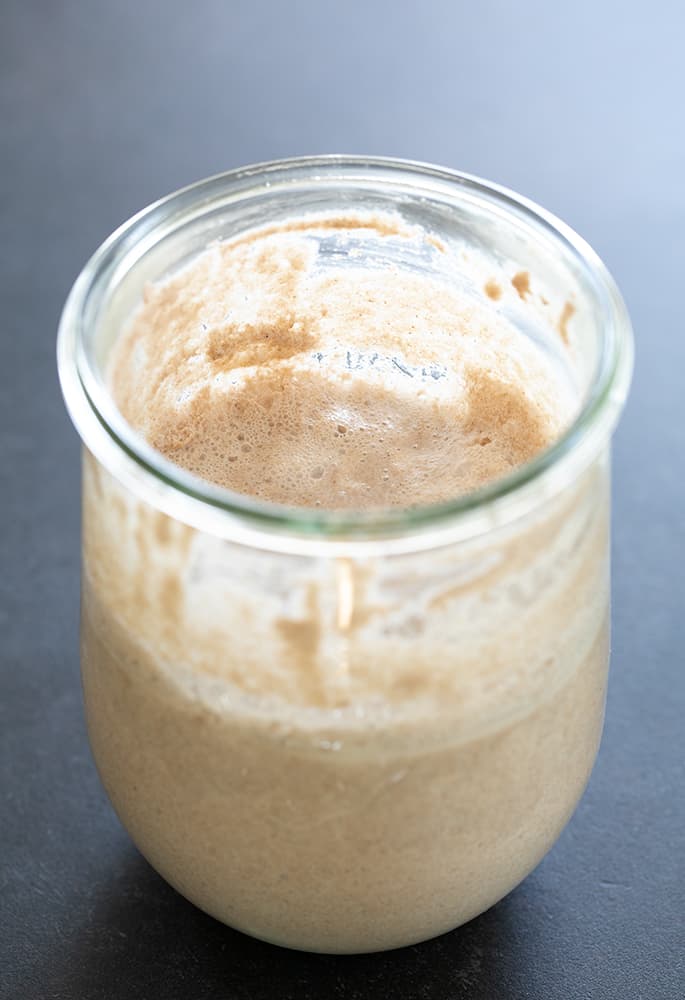
Why use wild yeast in this sourdough starter recipe?
Commercial yeast, like the instant yeast granules that we use in our gluten free bread recipe and many other gluten free bread recipes, is a single, isolated strain of yeast.
A pure “wild yeast” starter contains no commercial yeast at all. A wild yeast sourdough starter is great when you can't get your hands on commercial yeast because the cupboards are bare.
Once it's “active,” a sourdough starter can be used to create sourdough breads of all kinds. I have a whole chapter of pure sourdough breads in my bread book, GFOAS Bakes Bread.
Those recipes are more complex, and use more than just flour and water. They use my gluten free bread flour blend which contains some harder-to-source ingredients. This recipe is for a simple, liquid wild yeast gluten free sourdough starter, and the recipes are not interchangeable.
It does take time to cultivate, though, to allow the fermentation process to mature, so it's not a quick fix. At first, you must take action every 24 hours. Even after it's active, it must be maintained by being refreshed at least once a week. Otherwise, it may become inactive or over-active and spoiled.
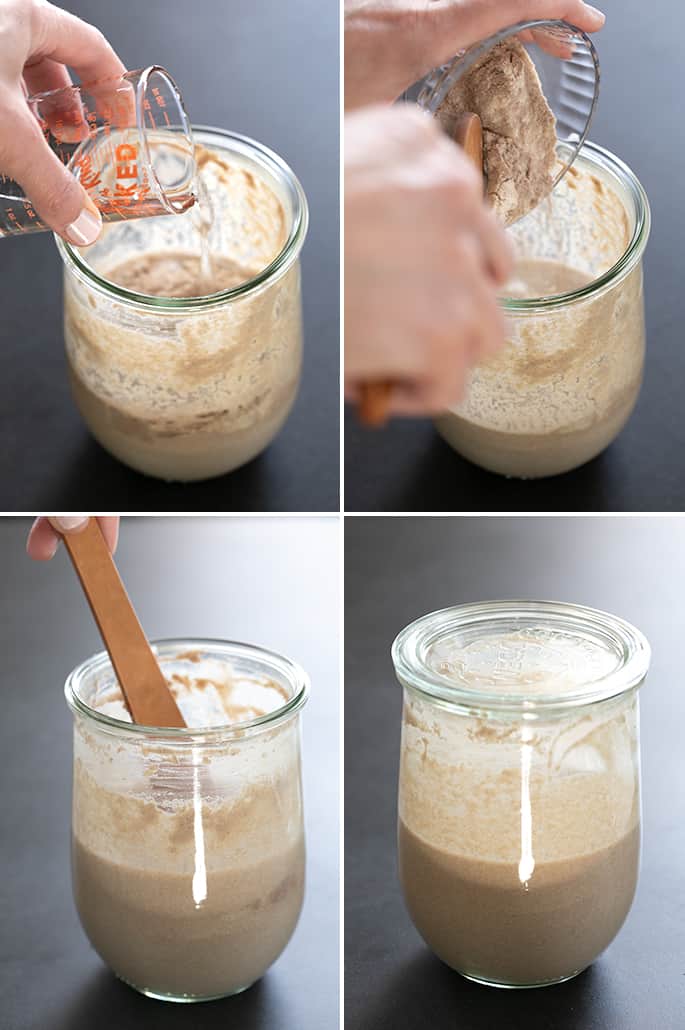
Tools and ingredients needed to make a gluten free sourdough starter
What gluten free flours should I use to make a gf sourdough starter?
I have always found it easiest to create a sourdough starter using a combination of sweet white sorghum flour and teff flour, and following it up with our gum-free gluten free flour blend. I have also successfully made a starter using other types of flours like brown rice flour, and I have read good things about using buckwheat flour.
What kind of water do I use for a sourdough starter?
You will need to use bottled filtered water or at least distilled water. Regular tap water contains chlorine which will kill yeast. Make sure that all of your tools that were washed with tap water are dried completely.
What is the right container and spoon for mixing and storing a sourdough starter?
You will also need a nonreactive container like a clean jar and spoon. Stainless steel is nonreactive, and it's really fine. In an abundance of caution, I tend to avoid all metal, especially before the starter is fully active, so a glass mason jar is great. But don't make yourself crazy.
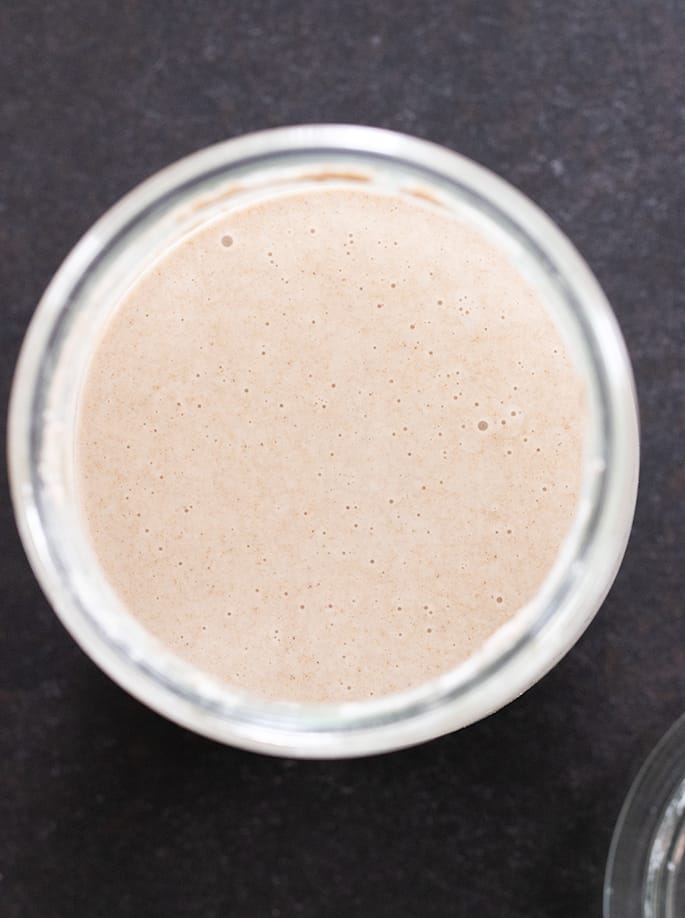
Troubleshooting your gluten free sourdough starter
My wild yeast gf starter hasn't become active at all
Yeast bread baking is an art as well as a science, and has a (sometimes very frustrating) learning curve. Creating a pure wild yeast sourdough starter is doubly so. The most important ingredient is patience
If you do have a bit of commercial yeast on hand, you can add a few grams to the mixture to give your starter a boost. Over time, the commercial yeast will be replaced by wild yeast.
If you're tempted to try to increase the ambient temperature surrounding your starter in an effort to help it grow, you can try lining a heating pad with multiple layers of towels and keeping it on low. Be careful, though, because all yeast will die at very high temperatures.
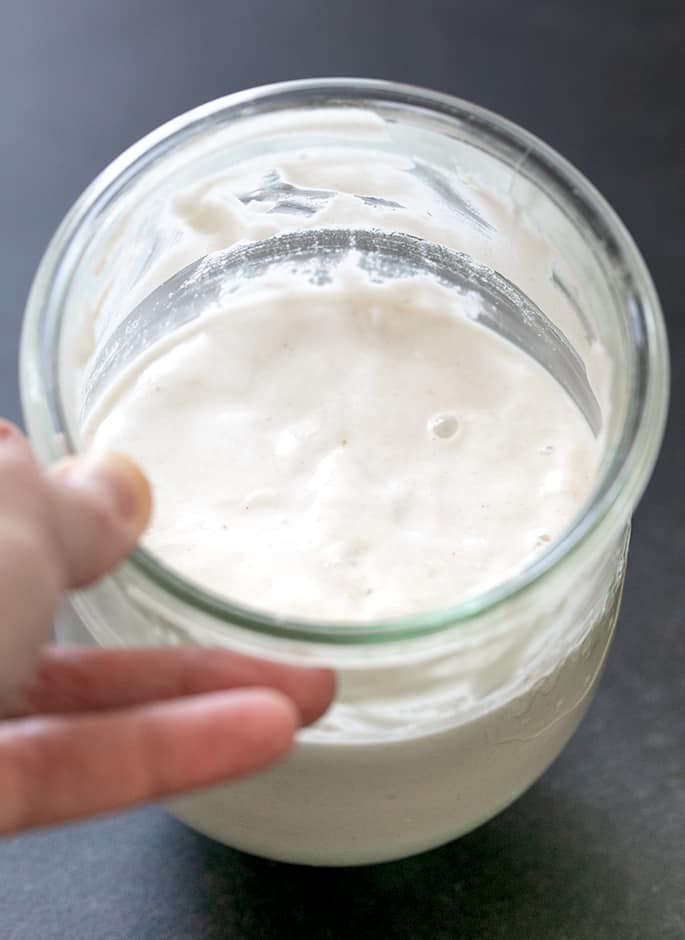
My wild yeast starter hasn't doubled
The doubling sometimes happens so quickly and can be so fragile with this type of simple wild yeast gluten free starter that I couldn't even manage to get a photo of it as doubled.
If you assume it must have doubled because it's so active, try noticing whether there is any residue on the jar above the top of mixture that looks like it could have been left from a risen starter level. You can see in the photo above that there's a “rise line” that is above a cleaner section of the jar.
It also might be worth proceeding with a small-yield recipe. It depends upon whether or not you're willing to risk wasting some ingredients. You can also make crackers if the mixture doesn't rise!
I think my gf sourdough starter has gone bad
Remember, this is essentially a controlled rot of ingredients using available wild yeast. Don't take chances with your health.
If you see something in your starter at any point that has a color you don't recognize, or the odor is at all disturbing and different, please discard it and begin again.
I forgot to feed or refresh my sourdough starter
Honestly, it's probably just fine. Don't listen to anyone who tells you that you have to feed your starter every single day, or that you have to start over again if you miss a step.
If you suspect that something has gone wrong, start again if you can. You don't want to throw good money after bad.
There's a strange liquid on top of my wild yeast sourdough starter
It's called “hooch” and you can stir it back in, then discard and feed or just feed, depending upon which step of the process you're completing. I prefer to drain off the liquid because it makes for a more sour starter, and my family doesn't love that.
How can I use this gluten free sourdough starter in baking?
The most common use of a sourdough starter is sourdough bread. Here is a link to our recipe for gluten free sourdough bread, which you will use to make yeast bread without any sort of commercial yeast.
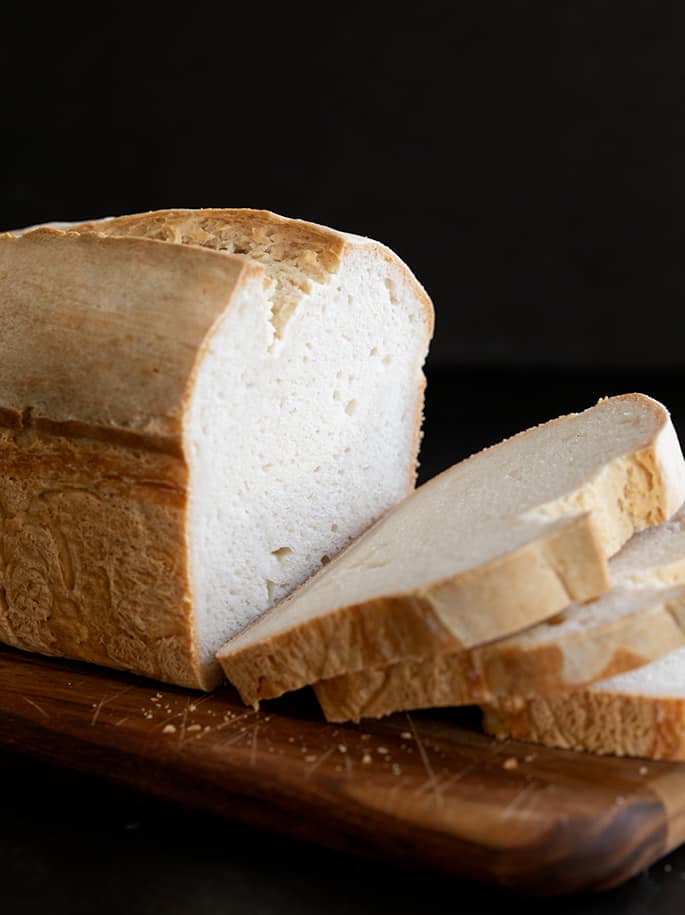
FAQs
The process of making a sourdough starter is unlike almost anything else you'll probably ever do in your kitchen. Here are answers to some of the most common questions about this whole process. Once you understand it, the steps become much more intuitive.
A wild yeast sourdough starter, gluten free or otherwise, is a combination of flour and non-chlorinated water that is combined to creative an environment conducive to the growth of the naturally occurring yeast that is all around us and in gluten free flours.
It's essentially a controlled rot, like kombucha, but if you think of it like that, you may not ever want to make it so let's move on. When yours is good and active, as described in the recipe card below, you'll be ready to bake fresh gluten free sourdough bread with it!
No! They're not. If a sourdough starter was made with gluten-containing flours, it contains gluten and should be avoided if you are on a gluten free diet. Period.
The wild yeast does not remove the gluten from gluten-containing flours. Please consider the source if anyone tells you otherwise.
“Feeding” a starter is another way of saying “refreshing” a starter. Once a starter is “mature,” meaning that it's already active and established, it must be fed by removing some of the mature starter and adding more of the “food,” in the form of water and flour, that make the starter most active and ready to use for baking.
As the yeast in your mature starter rests in your refrigerator, it consumes these building blocks. To keep it alive and active, a wild yeast starter must be fed regularly. It also must be fed soon before baking with it, so it's at its most active.
The best whole grain flours for a gluten free wild yeast starter are: A combination of sweet white sorghum flour & teff flour; brown rice flour; buckwheat flour. You can use these in whatever combination you like, but each element should be present to make it easiest to grow wild yeast.
Gluten Free Sourdough Starter Recipe
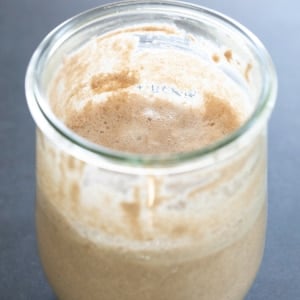
Equipment
- Glass jar or ceramic (must be nonreactive; no metal)
- Nonreactive spoon made of wood or silicone (must be nonreactive; no metal)
Ingredients
To Create The Starter: per day, for 5 to 7 days
- 1 cup (120 g) whole grain gluten free flour, (See Recipe Notes for info about selecting flours)
- 1 cup (8 fluid ounces) spring water or distilled water, at room temperature
To Refresh The Starter: once per week, indefinitely, and before/after using
- ½ cup (70 g) gum-free gluten free flour, (See Recipe Notes)
- ½ cup spring water or distilled water, at room temperature
Instructions
Creating the starter: Morning of Day One: Beginning.
- In a nonreactive container like a glass or ceramic jar, place 1/2 cup (about 60 grams) whole grain gluten free flour(s) and 1/2 cup (4 fluid ounces) spring or distilled water.
- Using a nonreactive mixing spoon (like a wooden or silicone spoon), mix to combine well.
- Cover the container loosely, and allow to sit on the counter at room temperature for 8 to 12 hours.
Creating the starter: Evening of Day 1: Building.
- Remove the cover of the container, and add another 1/2 cup (about 60 grams) whole grain gluten free flour(s) and 1/2 cup (4 fluid ounces) spring or distilled water.
- Using a nonreactive mixing spoon (like a wooden or silicone spoon), mix to combine well.
- Cover the container loosely, and allow to sit on the counter at room temperature for 8 to 12 hours.
Creating the starter: Morning of Day 2: Building.
- Remove the cover of the container, and add another 1/2 cup (about 60 grams) whole grain gluten free flour(s) and 1/2 cup (4 fluid ounces) spring or distilled water.
- Using a nonreactive mixing spoon (like a wooden or silicone spoon), mix to combine well.
- Cover the container loosely, and allow to sit on the counter at room temperature for 8 to 12 hours.
Creating the starter: Evening of Day 2: Building.
- Remove the cover of the container, and add another 1/2 cup (about 60 grams) whole grain gluten free flour(s) and 1/2 cup (4 fluid ounces) spring or distilled water.
- Using a nonreactive mixing spoon (like a wooden or silicone spoon), mix to combine well.
- Cover the container loosely, and allow to sit on the counter at room temperature for 8 to 12 hours.
Creating the starter: Morning and Evening of Days 3 through 7 and beyond: Building and/or Discarding/Building:
- Remove the cover of the container, and inspect the contents by tapping the jar on the counter to see if bubbles begin to break the surface of the mixture, and smelling it to see if it has any sour odor at all.
- If it does bubble and have an odor, discard any relatively clear liquid that has accumulated on top (called “hooch”) + about 1/3 of the volume.
- Then feed it: Add another 1/2 cup (about 70 grams) gum-free gluten free flour and 1/2 cup (4 fluid ounces) spring or distilled water.
- Using a nonreactive mixing spoon (like a wooden or silicone spoon), mix to combine well.
- If it doesn’t bubble and have an odor, do not discard but feed with 1/2 cup whole grain flour and 1/2 cup water as directed above.
- Cover the container loosely, and allow to sit on the counter at room temperature for 8 to 12 hours.
When is the starter ready to use?
- The starter is ready to use once it has ever doubled in size, and you have been feeding and discarding for at least one whole day.
- The doubling is easily disturbed, though, and typically won’t last for very long. It just has to have occurred for you to confidently use it in a bread-baking recipe.
- Before using the starter, you should have "fed" or refreshed it within approximately the previous 12 hours.
- After using the properly fed starter, refresh it (see the next step for instructions), allow it to sit covered on the counter for about 12 hours, and then refrigerate it until it’s ready to be refreshed or used.
Refreshing (feeding) your active/mature starter.
- An active starter can be used for baking, then refreshed and stored, covered, in your refrigerator for about a week.
- After about a week, you should refresh it. Here's how you do that.
- Refresh your mature starter by removing it from the refrigerator and discarding about 1/3 of the volume (including any clear liquid or hooch from the top).
- Next, add 1/2 cup (70 grams) gum-free gluten free flour and 1/2 cup (4 fluid ounces) spring water or distilled water. Mix with a nonreactive spoon.
- Cover the starter and allow it to sit on the counter for about 12 hours before returning it to the refrigerator.
- Repeat the process every week for the life of the starter.
Video
Notes
Nutrition information is automatically calculated, so should only be used as an approximation.

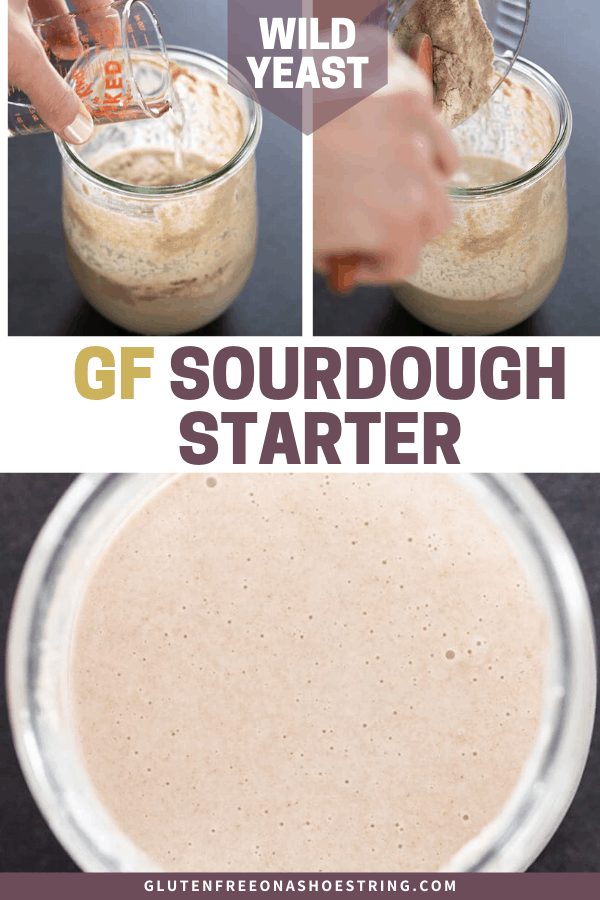
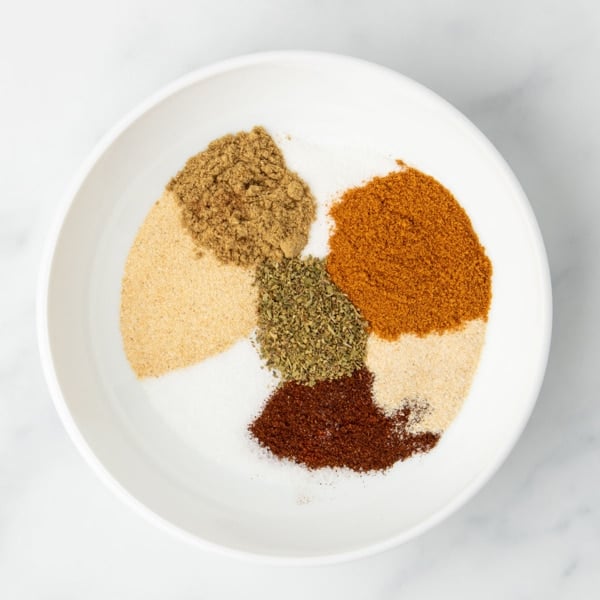
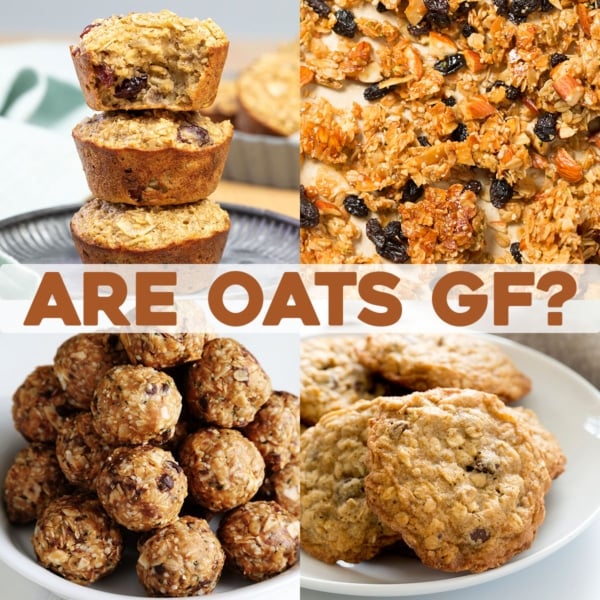
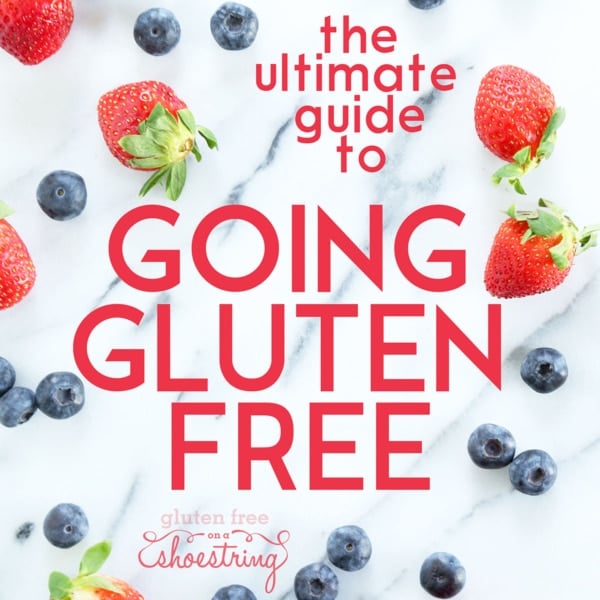
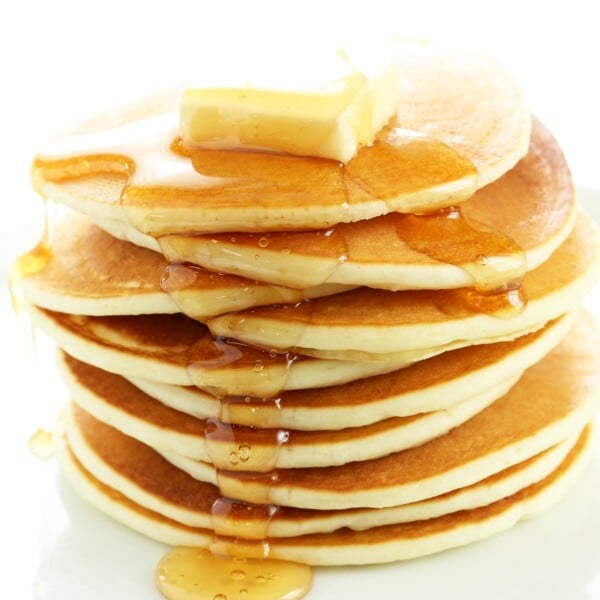









Why do you suggest using a gum-free flour recipe for your starter? i was hoping to use mock better batter for my GF sourdough.
Hi, Bekah, I’ve found that the consistency of the starter, and the consistency of any baked goods made with the starter, are both significantly better if you do not use any gums in its creation or maintenance. I really recommend avoiding Better Batter in this instance.
The most helpful thing I ever did for my gluten free starter was stick in a bit of food with wild yeast bloom on it, such as grapes or cabbage leaves. I keep feeding as usual and once the starter looks fabulously bubbly, I fish them back out. My flours just don’t seem to have enough wild yeasts by themselves to be worth sourdoughing so this is a game-changer.
Also, if you only have access to chlorinated water, letting some stand uncovered overnight is supposed to let enough chlorine evaporate. Worth a try!
Yes, you can absolutely do that, Amelia, but it imparts a fruity flavor to the starter, which I don’t care for—and tends to increase the hooch that you need to pour off. I would rather see someone add a pinch of commercial yeast to get things going than add grapes, grape juice, etc.
Nicole I have adapted your uncle Toms bread to take sourdough and it is awesome. I just replaced some of the flour and water with sourdough. I put a small amount of yeast just to speed it a bit but that is unnecessary these days when all we have is time ! The sourdough makes such a nice even rise and I love the texture. Makes great sandwhiches and toast. I feed the starter I use in this bread white sorghum. It reminds me of the white bread my mom used to make but is whole grains!
That’s great to know, Deanna. That bread is heaven-sent. It saved me waaaay back in 2004, and it’s still saving people today.
Timely! I started mine when we first had to go on shutdown here in Switzerland almost a month ago. I’m loving making the sourdough pancakes my grandma used to make as well as sourdough bread. I have used just buckwheat flour and it seems to be ok, but I love buckwheat a lot and I have a flour that has been really nicely milled so it isn’t quite as strong.
That’s great, Sophia!
Got it started this evening! Thank you so much for this! ?
Woohoo!!
Dear Nicole,
Such timing! I was on your site last night looking for a gluten free sourdough starter recipe and bread recipes. And today you delivered the starter. Baking supplies are almost non existent in my neighborhood stores as we all self isolate in our kitchens. Thank You. Your are such a wonderful resource. We are wishing you the very best!!
I’m thrilled, Michelle, that I was able to deliver when you were in need. And thank you so much for the kind words. I’m finding myself unexpectedly tender hearted these days. Everything is truly upside down!
I’ll be sharing baking recipes with it ASAP. I just want to be rock-solid on the ratios before I publish, now as always.
Thanks Nicole for an inspiring idea to try during social isolation here in Australia. I’m going to start right now.
Great, Fiona! I’m hoping everyone just forges ahead. Time and patience are really the most important ingredients, so the sooner you begin the better. ?
That’s awesome Nicole!. And scary.. I’m a tad concerned I’ll stuff it up. But I have yeast, & have been wanting to try a sourdough that doesn’t need the special bread flour. Question though – you say room temp… could we get an aprx temp on that please! I’m happy to convert from F to Celsius, but we’re in Autumn, so it’s possibly very different to your room temp? Curious if this makes a difference. Thanks again, add always, for being a step ahead of us! (I’ve been googling sourdough starters for the last week!) ?
Hi, Carolyn,
Don’t worry! You’re not risking a ton, and it will grow if you’re patient. Good question about room temperature. For me, room temperature is about 68°F/20°C, but it really doesn’t matter much. Yeast will grow in a rather wide temperature range, just at different rates. So if your room temperature is a bit cooler, it will simply take a bit longer to reproduce. Don’t worry. Read over the post a few times before you even get started. When you have the concept down, you’ll be able to adapt. Trust yourself! ?
What a brilliant idea when so many of us are running out of ideas!! Thank you so much!
If there’s one thing I always have, Laura, it’s ideas! My husband often calls them harebrained ideas, but one big one many years ago was this blog, so… ? Thank you so much for the kind comment. We’ll get through this!!
Nicole,
You have made so many beautiful things, your recipes always come out when followed precisely, and are always eaten right up in my household. Thank you for your efforts to help us GF people make a sourdough starter, I’m sure I’m not the only one struggling to find yeast right now. God bless you and your family. May you stay healthy. Thank you, again!
I think maybe you’re going to make me cry a little, Jill! Thank you so much for the kind words of appreciation. It’s really rewarding to at least try to help right now. It’s all we can count on for sure, right? ❤️